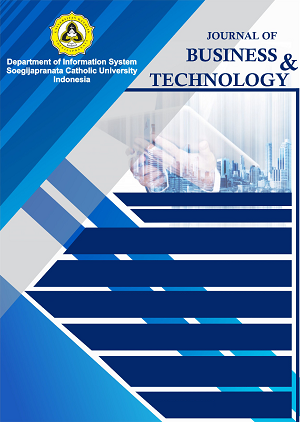Telegram Bot-Based Expert System as A Detection Tool for Early Symptoms of Borderline Personality Disorder
Abstract
Keywords
Full Text:
PDFReferences
L. V. Oey, R. Sanjaya, and C. Wibhowo, “LINE-based Virtual Friend Development for Borderline Personality Disorder,” 2021 International Conference on Computer Science, Information Technology, and Electrical Engineering (ICOMITEE), pp. 80-85, 2021.
K. Wingenfeld, C. Spitzer, N. Rullkötter, and B. Löwe, “Borderline personality disorder: Hypothalamus pituitary adrenal axis and findings from neuroimaging studies,” Psychoneuroendocrinology, vol. 35, no. 1. Pergamon, pp. 154–170, January 2010.
Association, American Psychiatric, Diagnostic and Statistical Manual of Mental Disorders (5th Edition: DSM-5). DC, Washington: American Psychiatric Association, 2013.
C. Wibhowo, “Causative factors of borderline personality disorder,” PSIKODIMENSIA, vol. 15, no. 1, pp. 107–122, 2016.
---, “Action Plan for the Directorate General of P2P and the Ministry of Health”, Ministry of Health, Jakarta, 2020-2024. [Online]. Available: https://e-renggar.kemkes.go.id/file2018/e-performance/1-401733-4years-753.pdf. [Accessed: 10-November-2021].
N. Lubis, H. Krisnani, and M. Fedryansyah, “Pemahaman Masyarakat Mengenai Gangguan Jiwa dan Keterbelakangan Mental” SHARE Social Work Journal, vol. 4, no. 2, pp. 137- 144, 2014.
B. Choresyo, S. A. Nulhaqim, and H. Wibowo, “Public awareness of mental illness,” Pros. Penelit. dan Pengabdi. Kpd. Masy., vol. 2, no. 3, pp. 381–387, 2015.
P. Prada, N. Perroud, E. Rüfenacht, and R. Nicastro, “Strategies to deal with suicide and non-suicidal self-injury in borderline personality disorder, the case of DBT,” Front. Psychol., vol. 9, no. DEC, pp. 1–6, 2018.
C. M. Temes, F. R. Frankenburg, G. M. Fitzmaurice, and M. C. Zanarini, “Deaths by Suicide and Other Causes Among Patients With Borderline Personality Disorder and Personality-Disordered Comparison Subjects Over 24 Years of Prospective Follow-Up,” J Clin Psychiatry, vol. 80, no. 1, pp. 30–36, 2019.
C. Susanto, “Application of Expert System for Mental Disorders in Children with Certainty Factor,” vol. 18, no. 1, pp. 27–36, 2015.
J. Liebowitz, “Expert systems: A short introduction,” Eng. Fract. Mech., vol. 50, no. 5– 6, pp. 601–607, Mar. 1995.
T. Istiana, G. S. B. Dharmawan, B. Prakoso, P. J. Komunikasi, and C. Author, “Weather Forecast Disemination System Development with Telegram Bot Application Using Webhook Method,” vol. 12, no. April, 2020.
Bots: an introduction for developers. [Online]. Available: https://core.telegram.org/bots. [Accessed: 28-December-2021].
Creswell, John, Research Design: Qualitative, Quantitative, and Mixed Methods Approaches. London: SAGE Publications, 2009.
J. Dermawan and S. Hartini, “Waterfall Model Implementation in Web-based App Development in Al-Azhar Syifa Budi Jatibening Elementary School,” vol. 19, no. 2, 2017.
Sugiyono, Educational Research Method (Quantitative, Qualitative, and R&D Approaches). Bandung: Alfabeta, 2015.
DOI: https://doi.org/10.24167/jbt.v3i1.4424
Refbacks
- There are currently no refbacks.
e-ISSN: 2776-0332 | View My Stats



